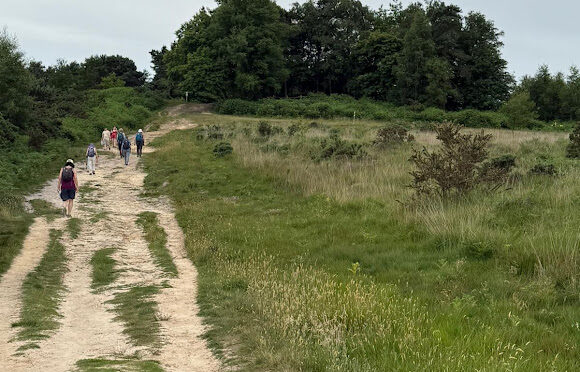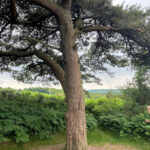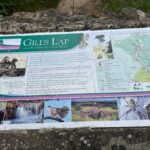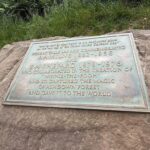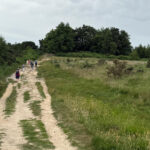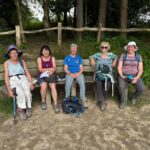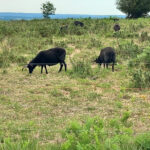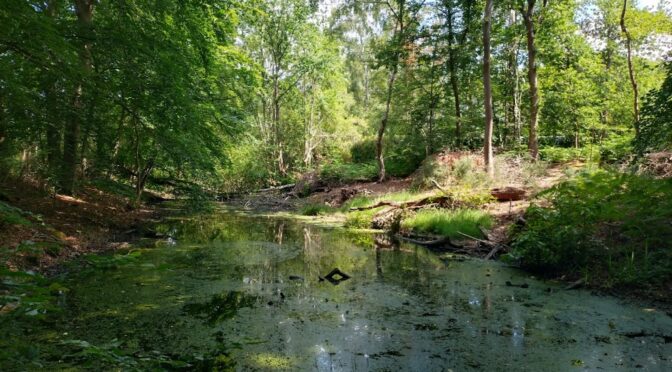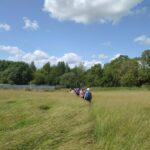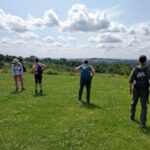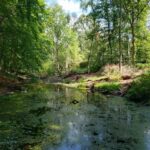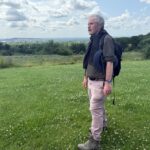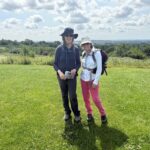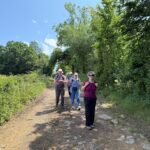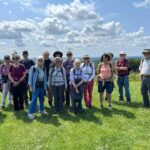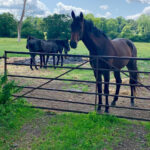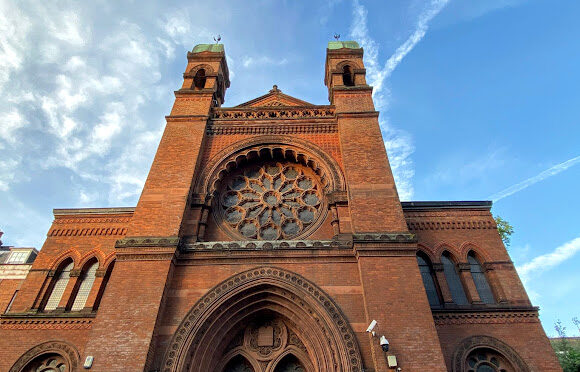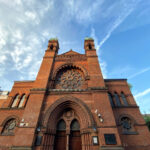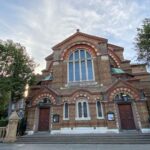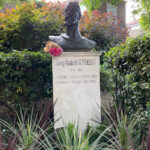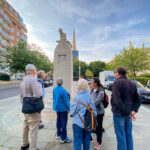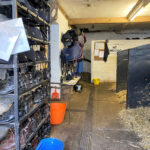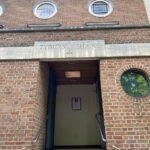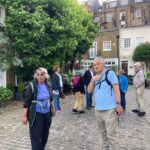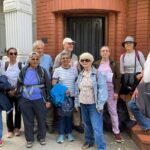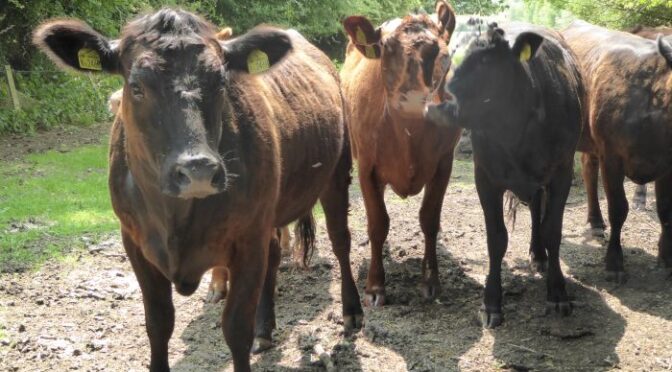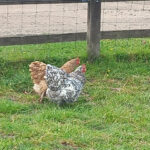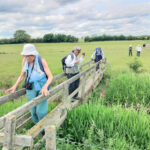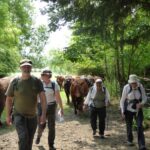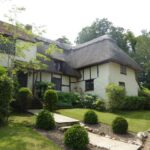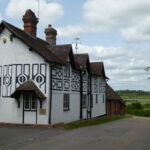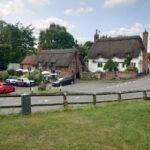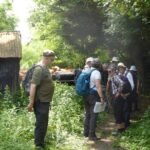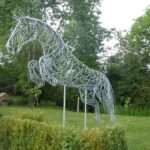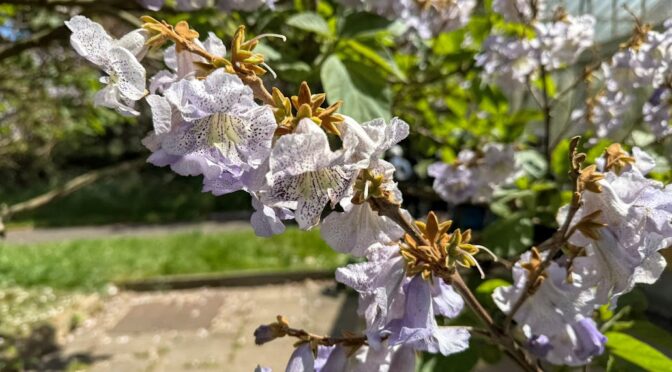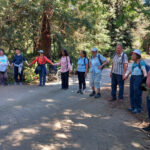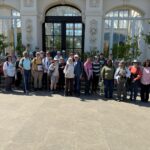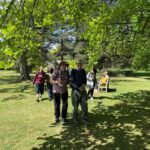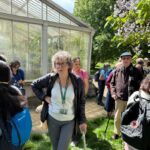Six Poly Ramblers travelled to Forest Row by train on one of the hottest days of the year, to begin section 5 of the Vanguard Way. The route now passed through some of the best and most isolated scenery with a route through the Ashdown Forest. We began our walk skirting the Royal Ashdown Forest Golf Course, we had a
temporary setback when we took a wrong path but quickly rectified our mistake. We eventually emerged from the golf course. Crossing a road, we followed the route circling Coleman’s Hatch cricket club and after some deliberation we followed a steep winding track walking along a road to start our climb up a broad rutted ride.
We stopped for a late picnic to have a much-needed break in woodland, before starting the long climb. The top of the ride was well worth the effort with amazing views on a clear day. We were now in Winnie the Pooh territory and standing in the spot in those stories known as the Enchanted Place. We entered a fenced
enclosure where there was a monument to AA Milne. We then headed to Gills Lap Clump where there was a magnificent Scots Pine. We went along a narrow footpath to see the Heffalump trap. Before continuing our route, we stopped to admire some very unusual sheep with four horns, unfortunately a member of our group stumbled, and the sheep scattered before we could use our cameras!
On our way to the bus stop in Poundgate we passed the halfway point of the Vanguard Way. We were rewarded with ice creams before increasing our strides in order to get to the bus stop in time to catch the train back from Eridge.
Hilary. Photos by Chris and Hilary

